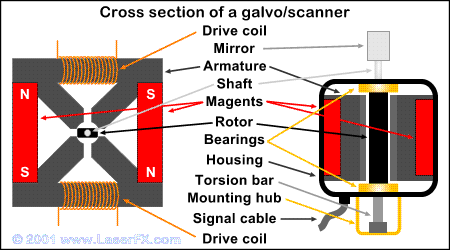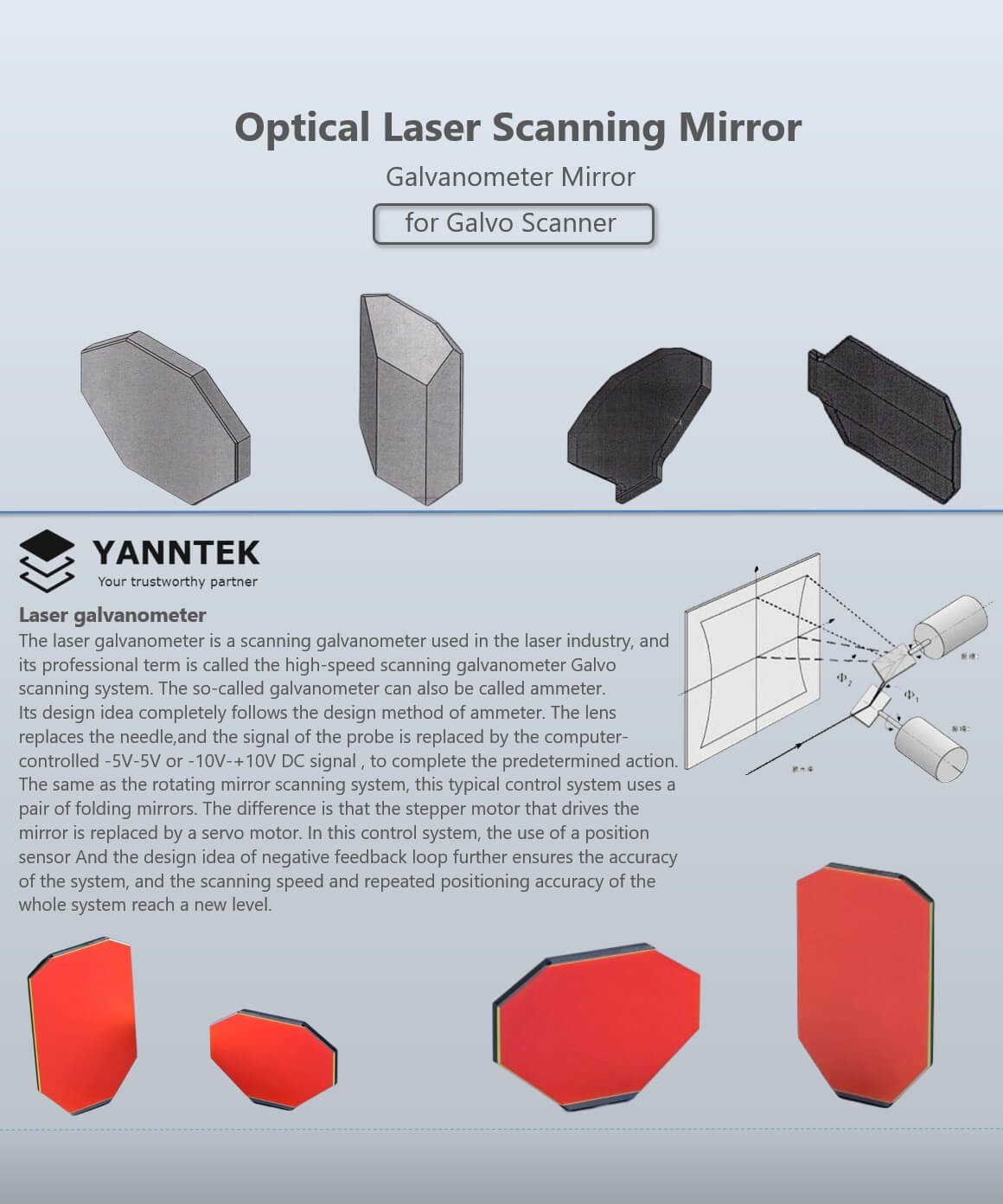Contrasting Various Versions of Galvanometer Scanners for Optimum Efficiency in Labs
Contrasting Various Versions of Galvanometer Scanners for Optimum Efficiency in Labs
Blog Article
Key Applications of a Galvanometer Scanner in Various Scientific Research Area
Galvanometer scanners have actually come to be integral to numerous clinical study areas, supplying improved accuracy in applications ranging from biomedical imaging to environmental surveillance. As we explore the multifaceted applications of galvanometer scanners, it comes to be obvious that their impact expands much past plain technical capacities, increasing questions regarding their future possibility in arising research study areas.
Biomedical Imaging

In confocal microscopy, galvanometer scanners assist in the acquisition of pictures with improved resolution and comparison, permitting scientists to envision cellular components in vivo. The capacity to swiftly capture several focal planes enhances the three-dimensional repair of cells, providing critical insights into their architecture and feature.

Moreover, the fast scanning abilities of galvanometer systems add to innovations in vibrant imaging applications, such as keeping an eye on mobile actions to stimulations. Therefore, galvanometer scanners are essential devices in the field of biomedical imaging, progressing study and professional diagnostics via their precision and performance.
Product Handling
Precision in material handling is essential for attaining high-grade lead to various commercial applications (galvanometer scanner). Galvanometer scanners play a crucial function in improving this precision by enabling fast and exact movement control throughout the handling of materials such as metals, porcelains, and polymers. These devices promote strategies like laser inscription, welding, and cutting, which need finely-tuned adjustments to make sure optimum outcomes
In laser cutting, for instance, galvanometer scanners permit intricate designs to be executed with high fidelity, minimizing waste and improving production effectiveness. The fast motion capabilities enable fast changes in the laser beam of light course, which is crucial for maintaining consistent cutting quality throughout varying material thicknesses. Likewise, in laser welding applications, the accuracy supplied by galvanometer scanners guarantees solid joints with minimal thermal distortion, thus boosting architectural honesty.
Moreover, the adaptability of galvanometer scanners to various laser kinds and wavelengths even more broadens their utility in material handling. Their capacity to work in tandem with innovative software for real-time monitoring and control includes an added layer of elegance, allowing manufacturers to achieve specific requirements tailored to details applications. Therefore, galvanometer scanners are important ahead of time the capabilities of product processing innovations.
Optical Characterization
In the world of optical characterization, the role of galvanometer scanners comes to be progressively significant as they assist in the evaluation of numerous optical residential properties with high accuracy. These devices make it possible for exact control of laser beam of lights, permitting researchers to methodically penetrate products at numerous angles and frequencies. This capability is essential for characterizing the refractive index, absorption coefficient, and spreading homes of diverse products.
Galvanometer scanners are particularly efficient in techniques such as optical coherence tomography (OCT) and laser-induced fluorescence (LIF), where fast scanning is essential. By attaining high-speed inflection of the laser position, galvanometer scanners enhance the temporal resolution of these approaches, leading to improved imaging and evaluation. Furthermore, they enable the exploration of complex interactions between light and matter, which is essential for understanding material behaviors under numerous problems.
Additionally, the assimilation of galvanometer scanners with spectroscopic techniques increases their energy, permitting comprehensive spooky analysis across a vast variety of wavelengths. This versatility makes them important devices in areas such as products scientific research, biomedical study, and nanotechnology, where thorough optical characterization is paramount for progressing expertise and advancement.

Laser Micromachining
The introduction of laser micromachining has actually revolutionized manufacturing procedures, making it possible for the production of detailed structures with exceptional accuracy. This method utilizes high-intensity laser beams to exactly eliminate material from a substratum, making it feasible to fabricate micro-scale elements that are vital in different sectors. The application of galvanometer scanners in laser micromachining enhances the effectiveness and accuracy of this procedure by permitting accurate and quick beam of light positioning.
Galvanometer scanners help with the vibrant control of laser my site beam of lights, enabling intricate patterns to be etched or reduced with high fidelity. Their fast reaction times and high-resolution abilities permit the control of laser pulses, which is vital for attaining the wanted material buildings and surface area coatings. This technology is especially valuable in fields such as electronic devices, where the miniaturization of parts is essential for efficiency enhancement.
Furthermore, laser micromachining is increasingly being utilized in the clinical field for making precision instruments and implants. The combination of laser modern technology and galvanometer scanning not only enhances manufacturing process however also minimizes waste and boosts total product application, making it a sustainable selection for modern-day production obstacles.
Environmental Monitoring
Ecological tracking has come to be increasingly important in assessing and managing the health of ecological communities and metropolitan atmospheres. The assimilation of galvanometer scanners in this area allows exact, fast, and effective data collection, facilitating far better decision-making processes. These scanners are adept at routing laser beam of lights or sensing units across various terrains, enabling high-resolution mapping of environmental parameters such as air high quality, dirt structure, and water contamination.
In air high quality tracking, galvanometer scanners can be used to examine particle issue and gaseous toxins, giving real-time data that informs public wellness efforts. For water top quality assessments, these scanners can assist in spotting pollutants and determining physical specifications, thereby making certain compliance with environmental laws. In addition, in remote noticing applications, galvanometer scanners boost the capability of satellite and drone Web Site systems to capture in-depth images and data of huge locations, determining ecological changes and anthropogenic effects.
The versatility and precision of galvanometer scanners make them indispensable devices in environmental tracking, adding significantly to lasting advancement efforts and the protection of all-natural sources. As the need for reliable environmental management grows, the function of these innovative devices will most certainly expand better.
Verdict
In recap, galvanometer scanners function as necessary devices across numerous clinical study why not check here domains. Their application in biomedical imaging boosts the accuracy of methods crucial for cellular visualization and diagnostics. In product processing, these scanners help with advanced laser cutting and welding procedures, making certain minimal distortion. Furthermore, their role in environmental surveillance emphasizes the value of precise information collection in dealing with public health and wellness and environmental obstacles. The adaptability and performance of galvanometer scanners remain to drive improvements in these crucial areas.
In laser welding applications, the precision supplied by galvanometer scanners makes certain strong joints with marginal thermal distortion, consequently boosting structural stability.
Furthermore, the flexibility of galvanometer scanners to various laser kinds and wavelengths additionally broadens their utility in product handling. By achieving high-speed inflection of the laser placement, galvanometer scanners boost the temporal resolution of these methods, leading to enhanced imaging and evaluation. The application of galvanometer scanners in laser micromachining improves the efficiency and precision of this procedure by enabling quick and exact beam of light positioning.
Galvanometer scanners facilitate the vibrant control of laser light beams, enabling intricate patterns to be etched or cut with high integrity.
Report this page